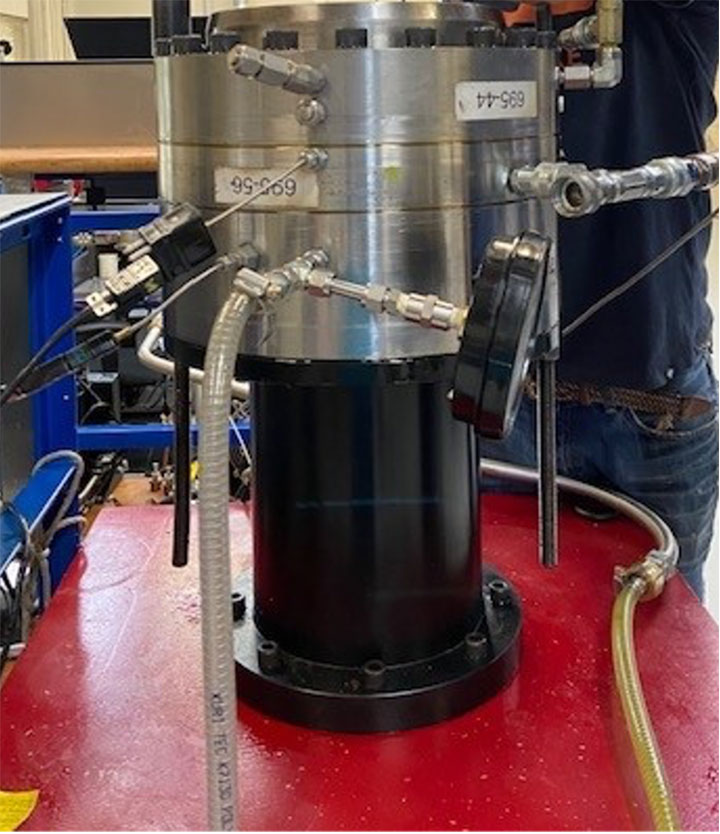The operating condition requirements for Rotary Control Devices (RCDs) are more challenging as drilling pressures and rotating speeds continue to increase. To meet this challenge, we continue to develop RCD sealing systems that extend RCD performance and life.
We recently paired our most pressure capable RCD seal (Plastic Lined Kalsi Seal) with our most pressure capable seal carrier (Axially force balanced, laterally floating backup ring) to achieve excellent rotary seal performance on a 10.50” mandrel rotating at 175 RPM with 2,000 psi differential pressure acting across the rotary seal. This evaluation was performed in our advanced rotary seals testing laboratory.
This testing is directed at the pressure retaining RCD seal in an RCD design that includes a seal/bearing lubricant pressurization system. This type of RCD design is required to operate under these demanding conditions.
The RCD seal test was run for 351 hours to establish a minimum life expectancy of 340 hours for the RCD seals at these operating conditions. This duration far exceeds the minimum duration of 100 hours as specified in API 16 RCD. In addition to running 351 hours continuously at 175 RPM with 2,000 psi differential pressure, the RCD test seals were subjected to 52 start-stop cycles. Each cycle consisted of pressurizing the seal lubricant to 1,640 psi, depressurizing 6 times without rotation, then rotating for 1.5 hours at 175 RPM with the differential pressure at 1,640 psi. As can be seen in Figure 1, the RCD test seals are in good shape after 351 hours at 175 RPM and 2,000 psi, 79 hours at 175 RPM and 1,640 psi, and 52 start-stops. It is clear that the RCD test seals could have continued to operate much longer under these demanding conditions. The test fixture is shown in Figure 2.
For more information and support for implementing our high-performance RCD seals, contact our engineering staff.



